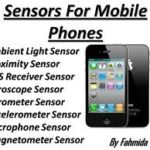 We have a very active research thread on the use of ambient sensors in mobile devices to provide location proximity for the avoidance or relay attacks. Modern mobile devices have several ambient sensors. It has been proposed that these can be used effectively in order to provide proximity location. However, our experiments have demonstrated that within the strict timing requirements of financial and transport applications, these sensors should not be deemed so effective.
We have a very active research thread on the use of ambient sensors in mobile devices to provide location proximity for the avoidance or relay attacks. Modern mobile devices have several ambient sensors. It has been proposed that these can be used effectively in order to provide proximity location. However, our experiments have demonstrated that within the strict timing requirements of financial and transport applications, these sensors should not be deemed so effective.
Ambient Sensors in Mobile Devices
Relay attacks are passive man-in-the-middle attacks, aiming to extend the physical distance of devices involved in a transaction beyond their operating environment. In the field of smart cards, distance bounding protocols have been proposed in order to counter relay attacks. In the field of smartphones, proposals have been put forward suggesting sensing the natural ambient environment as a potentially effective means for proximity/relay attack detection. However, these proposals are not in compliance with industry imposed constraints (e.g. EMV and ITSO) that mandate that transactions should complete within a certain time-frame (e.g. 500ms for EMV contactless transactions). In this research thread we evaluated the effectiveness of ambient sensors, widely available in modern smartphones, as a proximity/relay attack detection method for time restricted contactless transactions. Threshold-based and machine learning analysis techniques demonstrated the limited effectiveness of natural ambient sensing in countering relay attacks in such transactions. We proposed the generation of an artificial ambient environment (AAE) as a potential alternative. The use of infrared light as an AAE actuator was evaluated. Our results indicate a high success rate, while the proposed solution is in compliance with industry requirements. We are also examining the provision of artificial ambient sensor environments in order to limit the ability of the attacker to emulate the operational environment.
